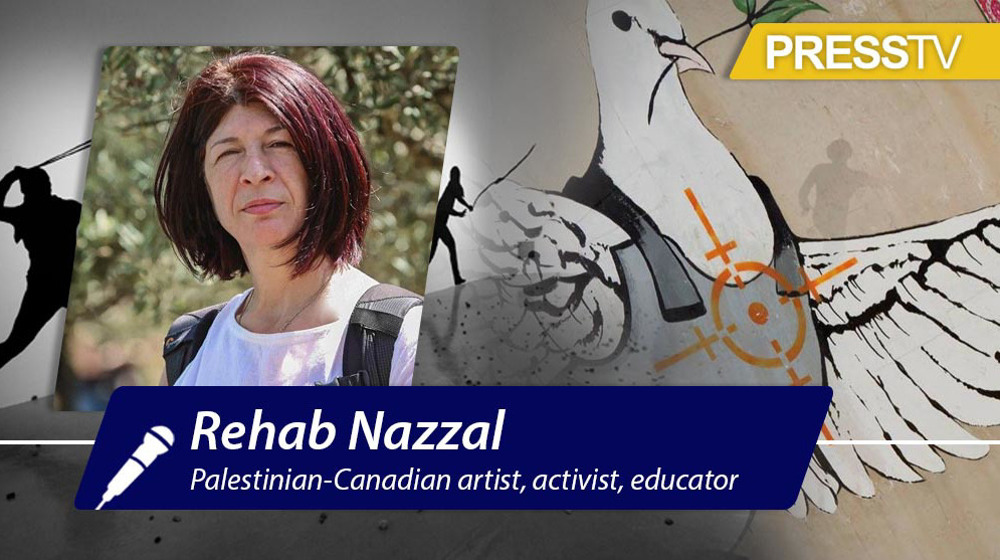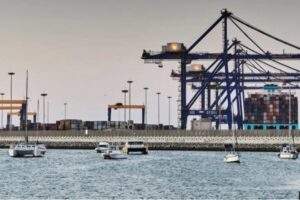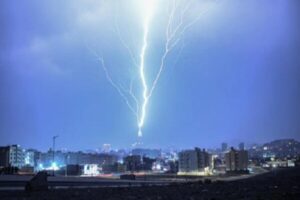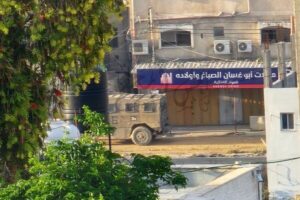By Fateme Torkashvand
Rehab Nazzal is a Palestinian-born multidisciplinary artist based in Canada. Her documentary, photography, and sound works, mostly focused on Palestine and the Israeli occupation, have won her critical acclaim globally.
She has documented her own experiences of living in the occupied West Bank and different forms of violence inflicted by the Israeli regime on Palestinians, both in the occupied West Bank and the Gaza Strip.
Nazzal was in Tehran recently to attend the 17th edition of Cinéma Vérité, Iran’s premier international festival for documentary films. She spoke about her work in this freewheeling interview with the Press TV website and how she feels about the ongoing genocide in Gaza.
Q. You have run photography projects including ‘Walking under Occupation’, ‘Driving in Palestine’, ‘Sonic Torture’ and others on the theme of Palestine. When and why did you start these projects? Why did you choose to create research-based work? What differences does it make?
A. The first of these was the photography-sound project Walking Under Occupation (2007). After being denied entry for over two decades by the Israeli occupation forces, I was able to return to my home country in 2006, with a visitor permit.
What I witnessed that year enraged me—the destruction of my ancestral land and the suffering of my people, who were and still are enduring vicious settler colonial violence in our time, compelled me to shift my practice.
Previously focused on in-studio painting, I transitioned my practice into research-based work, and since then, I have been working primarily with photography, video, and sound, focusing on Palestine and the indigenous Palestinians’ struggle for freedom and liberation.
I conceptualize my projects from lived reality, employing aesthetic choices that correspond to the issues I represent. I have no restrictions or limits when making decisions relevant to the content or form of my works; after all, we need to free ourselves from conventions and constraints when we examine oppressive power relations and represent resisting people.
Field research is significant for any artist whose work is critical. Research-based work is much harder than abstract research or studio work; it involves an examination of the roots and contexts of issues that concern us, through engaging the body and senses—observing, listening, witnessing, moving, and documenting. With research-based work, you immerse yourself into the communities you represent and become a participant rather than a passive observer.
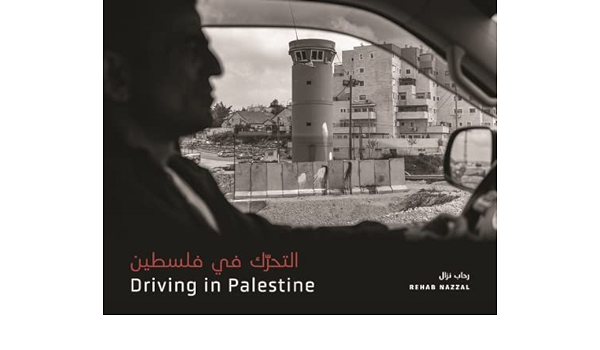
Q. How was the experience of working on the project ‘Sonic Torture’? It appears to be based on the same idea as your short film ‘Vibrations from Gaza’. How did you pass the process of the production with deaf children? What were their traumas?
A. Working on Sonic Torture was a very difficult experience. It was particularly painful for the former political prisoners, recalling their tormenting experiences in the occupation prisons and detention camps. The women and men I interviewed testified to the brutal physical and psychological torture they endured, including the occupation forces’ use of loud music and noise for days.
Both Sonic Torture and Vibrations from Gaza focus on Israel’s use of sound to inflict torture on the Palestinians. While the first examines Israel’s weaponizing of sound, including music, when used to torture Palestinian prisoners, the latter explores how deaf children in besieged Gaza survive Israel’s frequent bombings, including sonic weapons and drones’ noise.
Both works delve into the impact of Israel’s violence on the well-being of Palestinians.
The production of Vibrations from Gaza was not easy, as Israeli occupation forces prevented entrance to Gaza through the occupied West Bank. This forced me to travel through Egypt. Instead of one hour, it took three days to arrive in Gaza, including sleeping two nights on the roads from Cairo.
The idea of the film was conceptualized in 2021 when I traveled to Gaza, also through Egypt, one week after Israel’s attack, to help traumatized children in an art therapy program. That is when I found the experience of deaf children to be the most touching and decided to travel again the following year to focus on their experiences. Atfaluna Society for Deaf Children in Gaza, where I met the children, was a great place to start.
The children in the film articulate how they sense and perceive Israeli bombings and noise through vibrations in the air or trembling in the ground. These children were born and grew up under brutal military occupation and siege from the air, land and sea, surviving several Israeli onslaughts in a territory that doesn’t exceed 360 km. Throughout the production, I questioned whether the children’s hearing impairments were the result of Israel’s use of Gaza as a test field for weapons, including sonic weapons.
In Israel’s current genocide in Gaza, the NGO Save the Children just reported that more than 10 children per day, on average, have lost one or both legs in Gaza due to Israeli bombardment.
Before the ongoing horrors, children’s trauma in Gaza manifests right after each Israeli attack, through the fear of losing their parents, their homes, siblings, and friends; nightmares; weight loss; bedwetting; fear of sleeping alone; loss of ability to concentrate, and other symptoms typical of PTSD.
One of the astonishing facts, however, is the role of the community that helps traumatized children heal. The support, love, and care the children receive collectively are the most effective methods of healing from the continued trauma that Palestinians have endured generation after generation in the past 75 years.
Community centers, places of worship, and schools are important places for healing. Activities that involve the body, such as sports, dancing, swimming, and expressive art like drawing, painting and sculpting, are particularly significant in helping children heal. Considering the healing power of these institutions and community spaces, I was particularly enraged to discover that in Israel’s current onslaught, the Atfaluna Society for Deaf Children was destroyed.
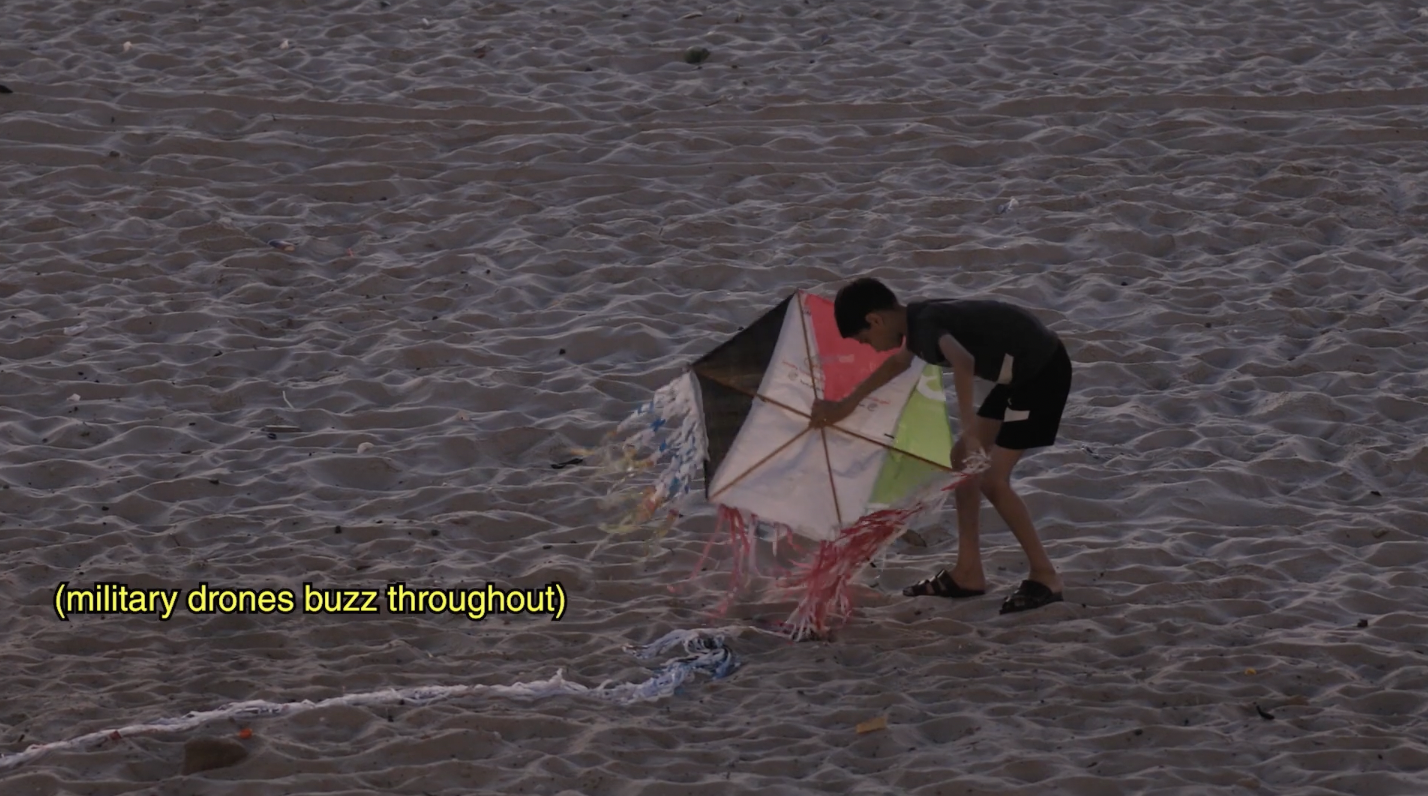
Q. Why hasn’t Israel been convicted of war crimes for what it has done to those deaf children?
A. Israel should be convicted of genocide, not only because of those deaf children but also due to the killing of over twenty-three thousand children in ninety days, injuring tens of thousands more, and displacing hundreds of thousands. This is in addition to all the massacres and crimes it has been committing since 1947, including the ongoing genocide in Gaza.
As a settler-colonial entity founded and sustained by Western colonial powers, Israel is financed, armed, and shielded from accountability to international law and humanitarian law by these powers including Britain and the US. Israel was established with terrorism and dispossession—ethnic cleansing and forced expulsion of two-thirds of the Palestinian population, and seizing of their lands and homes, along with the destruction of over 500 towns and villages and major neighborhoods in large cities.
Israel’s defiance of hundreds of UN resolutions since its establishment to this day is leading to its transformation into a fascist state, with no limits or standards to the crimes it is committing.
Q. How do you see Western representation of Palestine and Palestinians? Do you think it’s planned to represent them in a special framework in art or media?
A. Representation of Palestine and the Palestinian people in the West is often framed by a Zionist-Western narrative and interests. Anti-Palestinian racism is prevalent in Western art institutions, education institutions, and media. Israel’s terrorism, military occupation, colonization, and apartheid are represented as “self-defense,” while portraying Palestinian resistance and self-defense as “terrorism.”
The Palestinian narrative and freedom of expression, including artistic freedom, are suppressed across Western countries. For example, in Canada where I reside, calls for decolonization or indigenization become hollow when Palestinians represent their experiences.
Edward Said’s “Orientalism” (1979) exposed Western colonialist systems of representation of what they constructed the East- the Other, backward and in need of Western intervention. European Zionists, who established Israel, manifested such ideology in their justification of the elimination of the Palestinians.
For a prolonged period, Palestine was represented as “empty” and Palestinians were depicted as “terrorists,” while their oppressors and colonizers were framed as the “victims.”
However, this situation is changing as citizens of the world are no longer reliant on their states, mainstream media, and art and education institutions for information and knowledge. With electronic communication, the world is more interconnected, allowing people to identify contradictions, double standards, and misrepresentations. Ultimately, colonized, suppressed, and oppressed people worldwide share common aspirations for freedom, dignity, and rights and shared struggles.
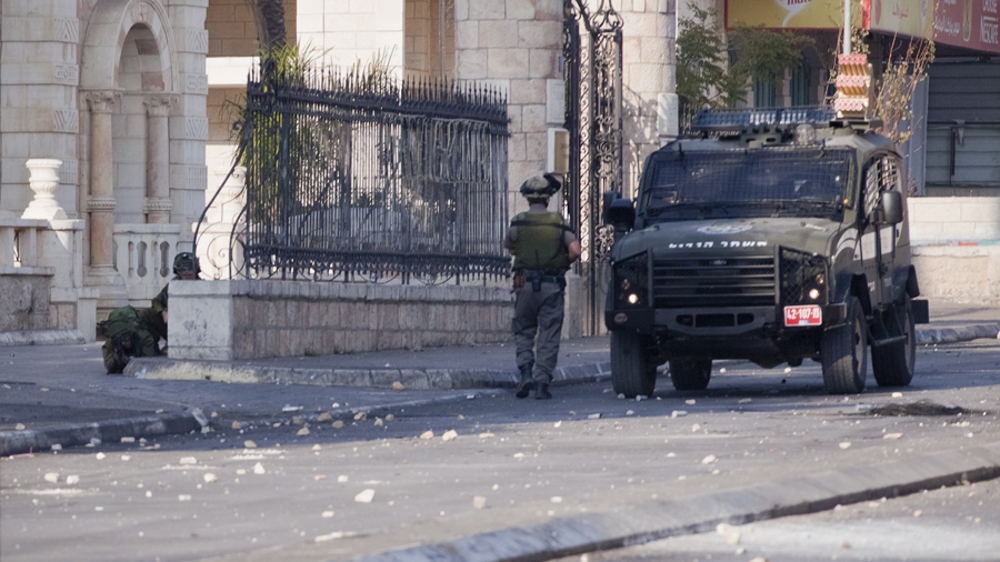
Q. You are a Palestine-born artist. Why were you denied the right to return to their homeland by Israeli occupation forces for 25 years? Is there any chance to represent your artworks in any form, from galleries to movies, in your motherland?
I grew up in Jenin, the occupied West Bank, under Israel’s 1967 military occupation. Upon finishing high school, I received a scholarship from Damascus University. When I completed my degree. Israel’s occupation authorities denied me the right to return to my home and family. I wasn’t alone; tens of thousands of Palestinians from the West Bank—students or those working outside Palestine—were denied their right to return.
This is part of the invisible ethnic cleansing that Israel practices by creating its laws and controlling Palestinian movement to or from the parts of Palestine occupied in 1967. In Jerusalem, it is even more dire, where rules imposed on Jerusalemites restrict their movement and interfere with who they can love and marry.
I use the term “invisible ethnic cleansing” because Israel denies all Nakba refugees, now constituting over six million, who were forcibly displaced in 1948 Nakba, their right to return to their homes and lands.
I present my work in Palestine – in Jerusalem, Gaza, Ramallah, Bethlehem, and Jenin. We always find ways to overcome Israel’s restrictions.
Q. You were injured in 2015 after being shot in the leg. What happened? Isn’t it important for rights watchdogs that Israeli forces target artists?
In 2015, I was conducting doctoral research in the West Bank funded by Canada’s Social Sciences and Humanities Research Council. As part of that research, I focused on Israel’s use of what is called “crowd control weapons” against unarmed protesters in the West Bank demanding an end to the military occupation.
While standing alone holding a camera on a main street in the Palestinian city of Bethlehem, documenting a “Skunk” truck that was spraying Palestinian homes and public places with the awful Israeli-made smell weapon, an Israeli sniper shot me in the leg.
When the ambulance arrived to aid me, Israeli forces rained tear gas at the paramedics, which constituted severe violations of international law. Fortunately, the bullet went through my leg without causing significant damage to bones or major nerves.
I was targeted as a photographer capturing Israeli violations. Israel fears photographs and photographers, it fears exposure of its forces and settlers’ brutality and crimes against Palestinian rights.
The Canadian government and my university remained silent about the shooting of a Canadian citizen. If I weren’t from a Palestinian origin, I am certain the response would have been different. This is an example of the anti-Palestinian racism that prevails in Canada and other Western countries.
Perhaps that incident emphasized, even more, the significance of documentary media and its threat to colonial oppressive powers. This brings me to the horrors that journalists and photojournalists currently endure in Gaza. Israel’s targeting of an unprecedented number of Palestinian journalists and photojournalists, particularly in Gaza, is intended to hide the most horrific crimes being committed against the Palestinians.
According to Geneva-based Euro-Med Monitor, in the past 3 months, Israel has targeted and killed 105 journalists in Gaza – this is more than in all of World War II or the Vietnam War. Israel’s crimes extend to the murder of children and babies, the displacement of the majority of the Gaza population from their homes, and the destruction of homes, worship places, schools, cultural centers, and infrastructure.

